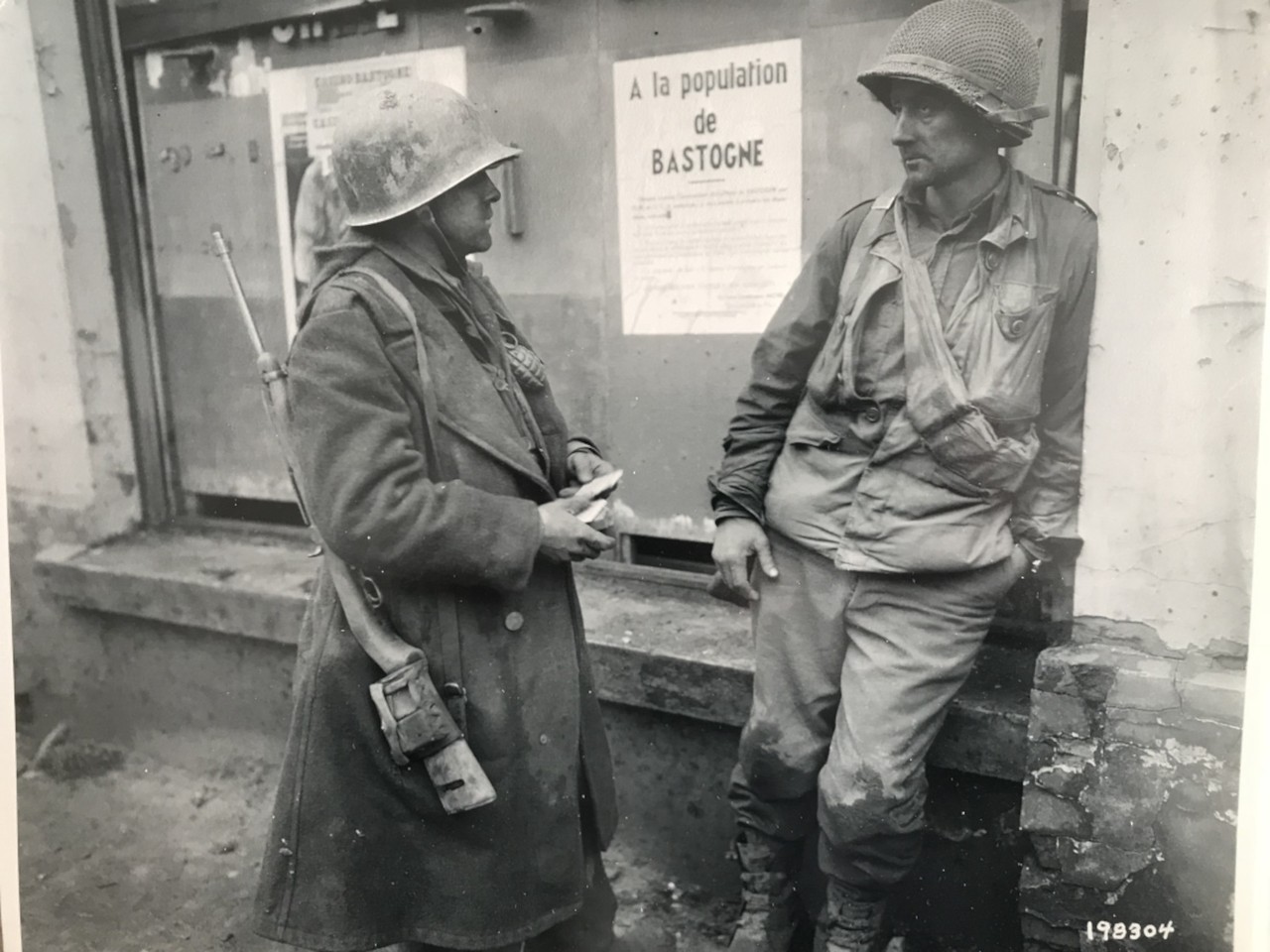The Wehrmacht had predicted only six days of bad weather for the offensive, after which they would be exposed to the dominant United States air force.
The stubborn defence of the US 28th Infantry Division along the high road from Weiswampach to Diekirch significantly delayed German bridge-building over the River Our. Especially the deep valleys and the narrow winding roads hindered the advance of two German Panzer Divisions (PzDiv) in this area. After heavy losses, it was not until the second day that intact bridges were secured for the German advance roads in Clerf and at other important junctions, whereas in the Hosingen-Consthum area the fighting was still stubborn.
In the meantime, the 101st US Airborne Division in Reims received the order to secure Bastogne. The Germans were now in a hurry.
In order to stop the advance of the 2nd PzDiv towards Bastogne, the US 8th Army Corps, with the help of the US 9th Tank Division (TK), organised barricade positions in the area of Derenbach-Antoniushof.
After night combats with heavy losses, these exhausted US combat groups finally had to retreat to Longvilly. The 2nd PzDiv did not follow, but according to orders bypassed Bastogne on the further advance to the Meuse.
On the morning of 18 December 1944, the Panzer Lehr Division (PzLehr), with the help of the 26th Volks Grenadier Division (VGD), was able to advance on the southern flank into the Wiltz area, where fierce defensive battles broke out. Under time pressure to reach Bastogne quickly, the PzLehr had to bypass the fortified Wiltz via Derenbach-Niederwampach. Via a time consuming dirt road to Benonchamps, Magaret could be captured by the PzLehr during the night, thereby trapping an advanced US tank unit of the US 10th US Armored Division near Longvilly.
The Panzer Lehr Division armoured vanguard reached Neffe on 19 December 1944, but had to wait for hours for the fuel supply, which did not move forward because of the US tank unit's rearward defeat. At the same time, the 101st Airborne Division was able to get into position in front of Neffe just in time.
The German hope of taking Bastogne in a hand-strike was prevented by a few hours.
It was not until 20 December 1944 that the encircled town of Wiltz could be completely captured by the Wehrmacht and early on 22 December the ring around Bastogne was closed.
Without the time gained by the self-sacrificing resistance of the brave US 28th Infantry Division with its subordinate units, the defence of Bastogne would not have been possible.
